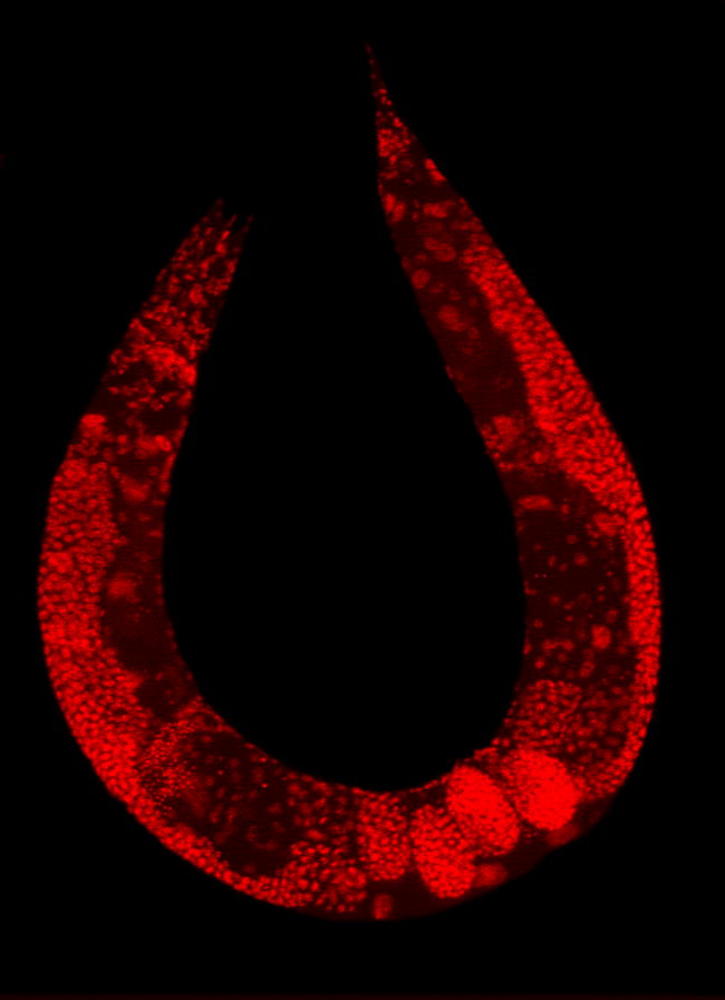A tissue dye, used commonly in pathology labs to stain proteins, appears also to have significant life-lengthening effects in some species.
Known as ThT - short for Thioflavin T - the tissue stain is usually employed to reveal the extent of beta amyloid build-up in brain samples from patients with Alzheimer's disease.
 But its ability to bind to these pathological proteins made Buck Institute scientist Gordon Lithgow and his colleagues wonder whether the dye might also be able to block the formation of abnormal protein aggregates in the first place.
But its ability to bind to these pathological proteins made Buck Institute scientist Gordon Lithgow and his colleagues wonder whether the dye might also be able to block the formation of abnormal protein aggregates in the first place.
To find out, they treated groups of C. elegans, tiny worms used a model organism in genetic studies, with low doses of the dye. Incredibly, the animals extended their lifespans by up to 80%.
"They looked younger and moved around more," says Lithgow.
To home in on the underlying cause for the longevity boost, the team then tried dosing worms that had been genetically programmed to develop a muscle wasting condition caused by an amyloid build-up similar to the situation that provokes Alzheimer's in humans. Compared with their controls, the proportion paralysed worms fell to 20%.
The team then used a genetic technique to suppress the action of a range of different classes of genes in the worms, looking for genes that appeared to be essential for the life-prolonging effect of the ThT.
Several critical candidates emerged, and foremost among them were genes concerned with the so-called "stress-response". This helps cells to defend themselves against damage, partly by stabilising their proteins, including the very proteins that tangle-up to form amyloid plaques.
This, say the researchers in their paper in the journal Nature, suggests that ThT can prolong life by initiating stress-response pathways in cells, stabilising misfolded proteins to prevent tangles from worsening, and also by binding directly to amyloid aggregates to promote proper folding and block pathogenic effects.
According to Lithgow, the next step will be to deliver ThT, or one of its close chemical relatives, into rodent models and ultimately humans to see if it can do for mice and men what it appears to do for worms...










Comments
Add a comment